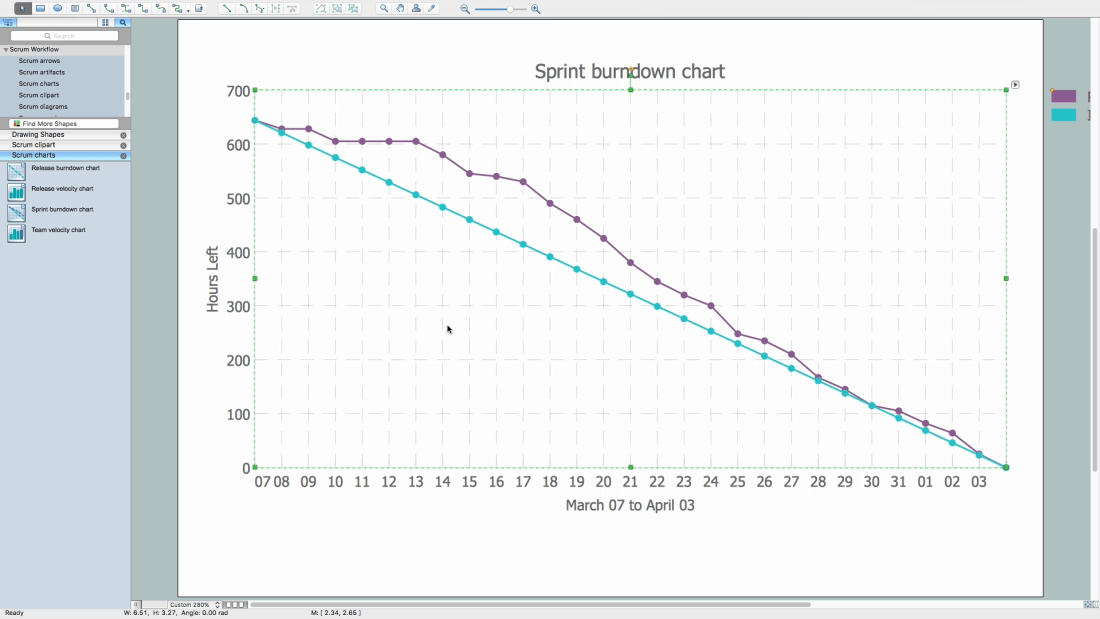Scrum Process Template Visio 2007
When you, you must choose its process template. The process template defines the set of work item types and reports that you will use to plan and track your project. Choose the template that offers the tools your team needs, and that helps your team focus on quality by reducing overhead.
This topic helps you choose between the three default process templates that TFS provides. The latest versions of the default process templates that Team Foundation Server (TFS) provides are automatically uploaded when you install or update to the latest version of TFS. You can also. Note The workflow illustrations provided in this topic reference the default process templates provided with Visual Studio Team Foundation Server 2012. You can access the latest versions of these process templates by installing the latest update for Microsoft Visual Studio Team Foundation Server 2012. The enhanced workflow definitions support additional regressive transitions.
These transitions allow you to quickly move items back to the backlog when they were incorrectly resolved or closed. With these updated process templates, when you inadvertently drag a work item on the Kanban board or taskboard to a resolved or closed state, you can drag it back to an earlier workflow state. These enhancements are available with these or later versions: Visual Studio Scrum 2.1, Microsoft Solutions Framework (MSF) for Agile Software Development v6.1, and MSF for Capability Maturity Model Integration (CMMI) Process Improvement v6.1. To access the latest versions of the process templates that TFS provides, install the latest update for TFS. You can obtain the upgrade from the Microsoft download site:. The default templates are designed to meet the needs of most teams.
All of them support using the Agile planning tools to and. If your team has unusual needs, you can and then create the team project, or you can create a team project from a template and then customize the project.
You can choose based on the following considerations:. Choose if your team manages bugs along with product backlog items during sprint planning. Choose if your organization triages bugs separately from the product backlog and resolves work items before closing them. Choose if your organization triages bugs separately from the product backlog, resolves work items before closing them, and tracks changes to requirements formally. Process area Visual Studio Scrum 2.1 MSF for Agile v6.1 MSF for CMMI v6.1 Workflow states. New.
Approved. Committed.

Process Template Word
Done. Removed. New. Active. Resolved. Closed.
Removed. Proposed. Active. Resolved.
Closed Product planning To customize the backlog pages, see. Task and iteration planning To customize the task board, see. Bug backlog management. Project management. Test management (same for all templates).
Shared Steps. Shared Steps.
Shared Steps Code review and feedback (same for all templates). Code Review Request. Code Review Response. Feedback Request.
Feedback Response. Code Review Request. Code Review Response. Feedback Request. Feedback Response. Code Review Request. Code Review Response.
Feedback Request. Feedback Response. Note Work items from these type definitions are not meant to be created manually and therefore are added to the Hidden Types category.
If you have upgraded a team project from an earlier release, you can add these work item types. For more information, see. The following workflow states are defined for each of these work item types:. Code Review Request: Requested and Closed. Code Review Response: Requested, Accepted, and Closed. Feedback Request: Active, Closed and Removed.
Feedback Response: Active and Closed. Note The workflow states of both the Scrum and Agile process templates have been updated from their previous versions. Each one now contains a Removed state, which supports removing cut work items from the backlog.
Also, the Agile process template now supports New as the initial state for user stories and tasks This change was introduced to support transitioning user stories and tasks from a New state to an Active state. Without the New state, user stories assigned to an iteration remain on the product backlog until they are resolved, which is not a desired or expected behavior. When you launch the New Team Project wizard, the tasks defined by the plug-ins shown in the following illustration are run to create your team project.
Tasks set permissions, create folders, upload files, activate sites, or set other configurable variables. You can customize any process template to meet any team's business processes. You can also customize your team project process after it has been created. You can add artifacts from one process template to another process template. To learn about the most common customizations, see. To learn more about customizing process templates, see.